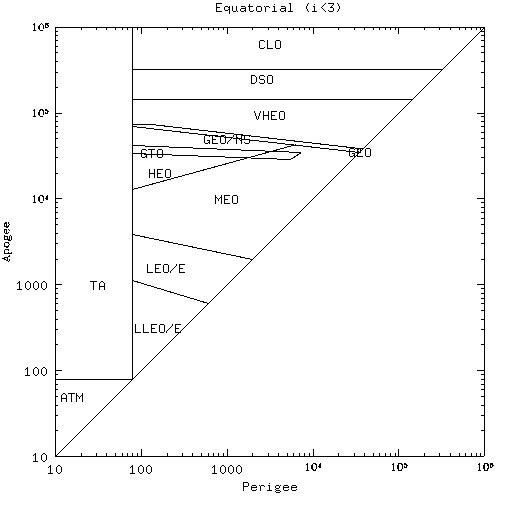Orbit categories don't match directly between GCAT and CCSDS. Discussion follows.
- LEO: In GCAT LEO is (p+a)/2 < 2000, while in CCSDS LEO is a < 2000.
- GEO/S: In GCAT this is bounded by T=GEO+-0.5 min, i < 3, e < 0.01.
That eccentricity value corresponds to a broader range of heights than CCSDS's "GSO".
- GEO/I: In GCAT this is bounded by T=GEO+0.5m, i < 3, e < 0.05 and so again is a broader
range of heights than CCSDS "GEO".
- GTO: In GCAT this requires a period of 10 to 12.5h;
It also requires e of 0.5 to 0.7 but does not
require the perigee to be in the LEO region. The inclination max is 85 rather than 90 deg.
- MEO: In GCAT MEO is simply defined as orbital periods from 2 to 23h and e < 0.5
- HEO: In GCAT HEO is defined as 4 to 23 h and e > 0.5.
- HCO: Corresponds to HELIOCENTRIC (and INTERPLANETARY?)
- PCO: Corresponds to PLANETARY and LUNAR
A number of GCAT categories such as VHEO (very high Earth orbit), CLO (cislunar/translunar)
and SSE (solar system escape) have no CCSDS counterparts.
 | 
|
| GCAT equatorial orbit types | CCSDS equatorial orbit types
|



